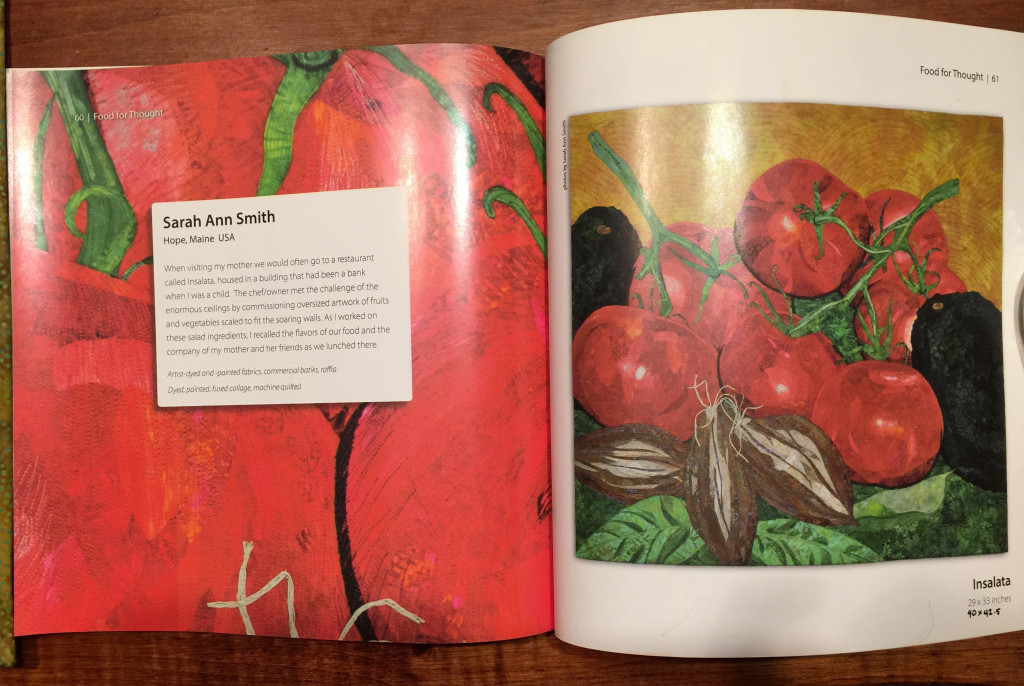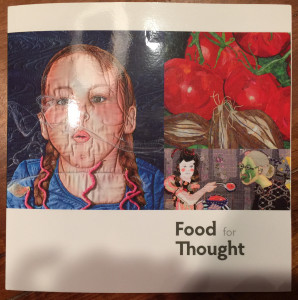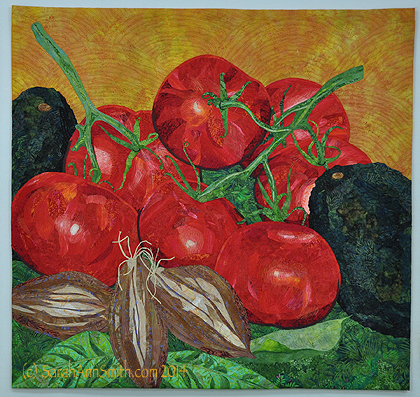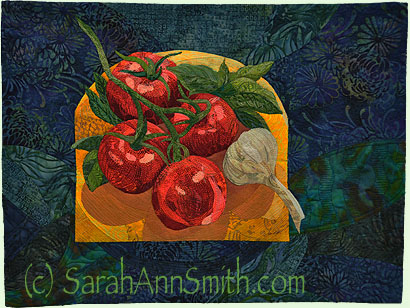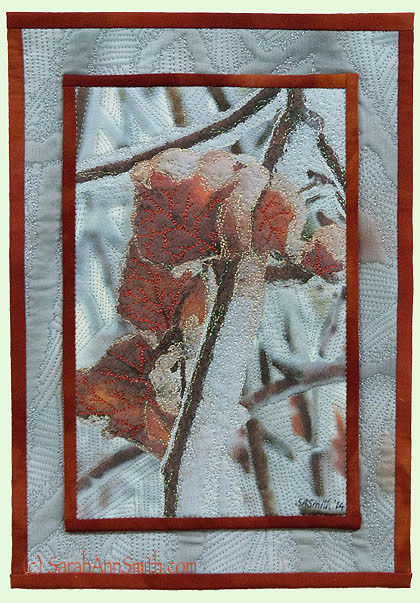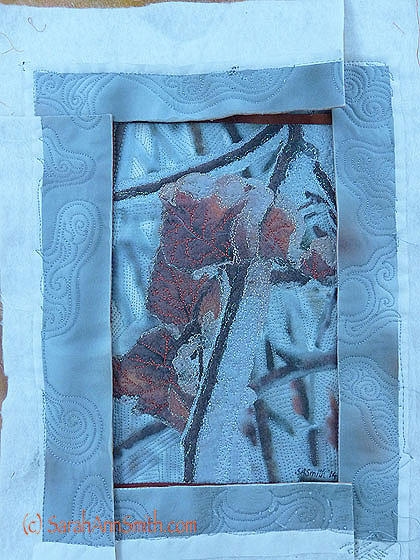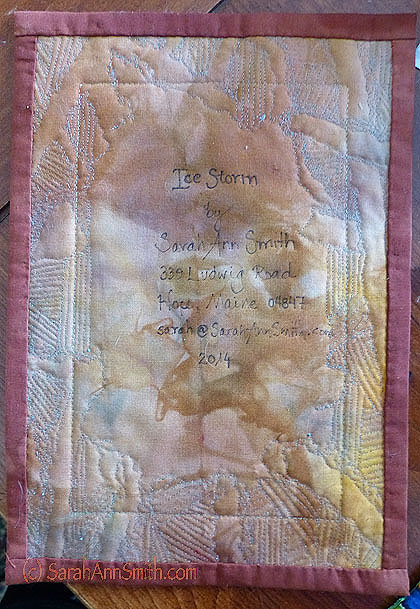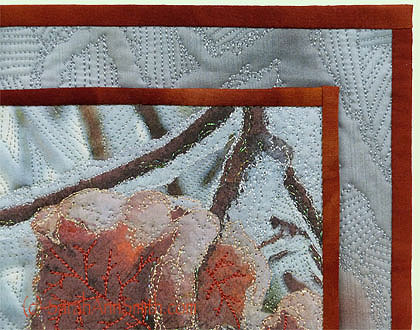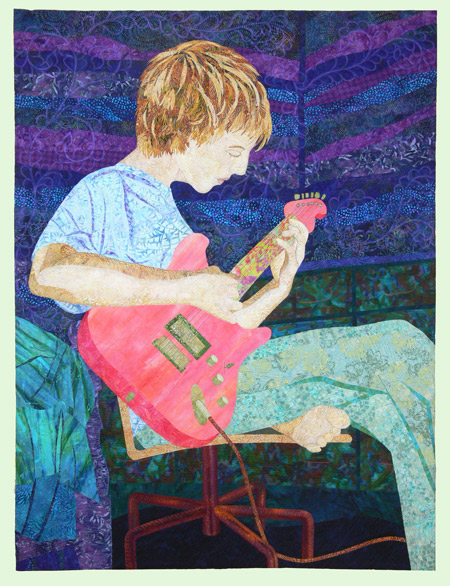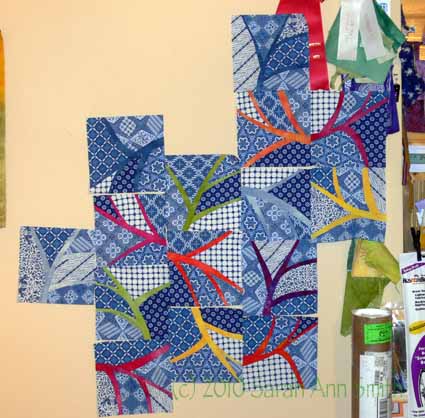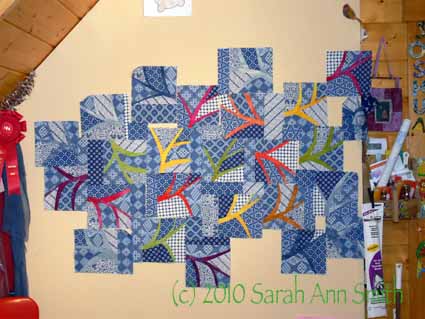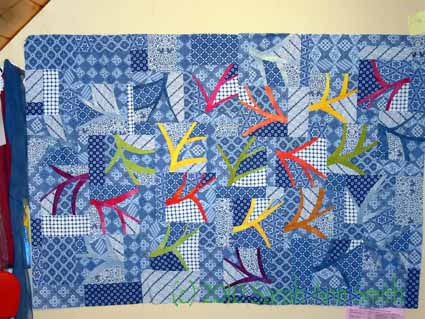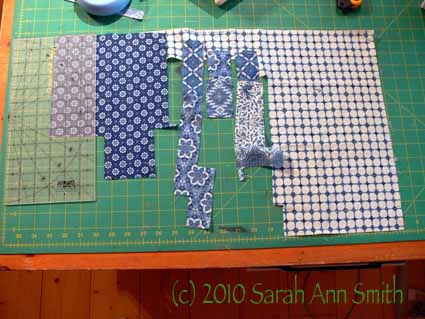I’d like to ask you to consider supporting a funding drive to complete a documentary on the Tentmakers of Chareh El-Khiamiah. The fund drive is being held on Pozible (here) and they will accept any donation. Even if you can donate only a few dollars, every bit helps. Let’s get this documentary of textile art funded and made. Today, Tuesday the 19th February, the total pledged is $13250, and 160 made a pledge – but they still need to reach their target of $20,00 by the end of February. I hope you will find you can to support this important project with at least a small donation and by passing this on to some of your friends. Please feel free to link to this post and borrow from it to help support this project!
For more information, read on!
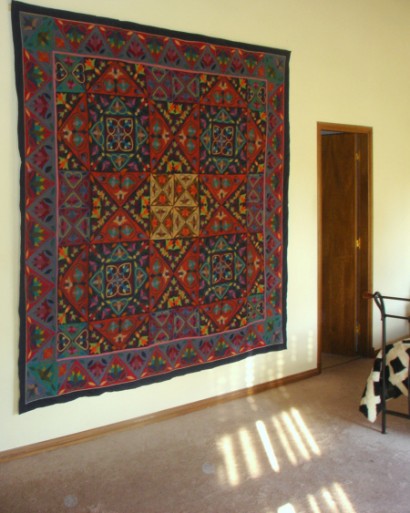
An Egyptian Tentmaker’s hanging in the collection of Alison Schwabe
Several years ago Jenny Bowker, a fabulous Australian art quilter and teacher, moved to Egypt while her husband served as the Australian Ambassador to Egypt. While there, she came to know and love the land, and especially the Tentmakers. In that culture, beautifully decorated tents were used for special events, but with the rise of machinery and the modern era, the art and craft of tentmaking was fading. Jenny was so moved by this beautiful textile art, that she began to share it with the rest of the world. I first read her posts on her blog and on the QuiltArt list. Later, I attended a lecture at the International Quilt Festival in Houston where I sat with tears in my eyes as she shared the appliqued textiles they make and what she has done to bring pride and respect to their art. She has since been able to bring a couple of the tentmakers and many men’s work (the tentmakers are men) to Australia, the United States and Europe where their works sold like hotcakes and impressed many. The quilt above is one of two in Australian quiltmaker Alison Schwabe’s collection (Alison’s website is here). Here is a detail photo:
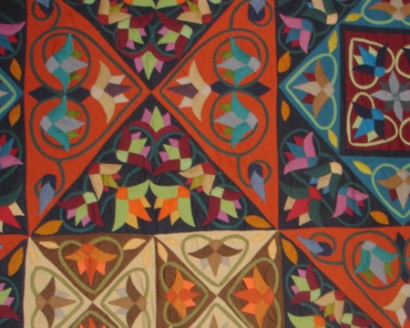
Detail of the quilt at the top of this post.
And Alison’s other textile:
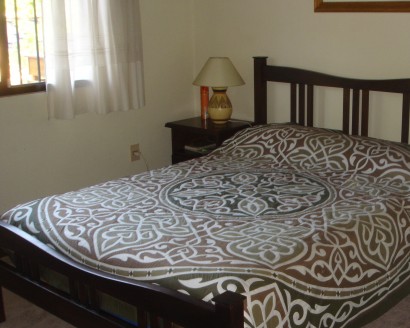
Egyptian tentmaker’s applique work, in the collection of Alison Schwabe
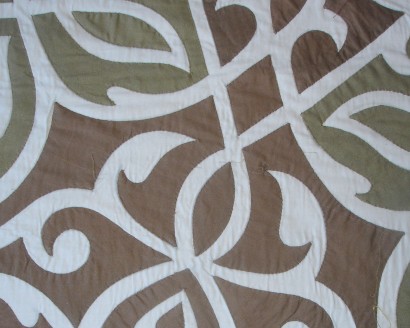
Detail photo
After the “Arab Spring” that began with demonstrations and protests in Dec. 2010 and continued through spring of 2011, Jenny was involved with an exhibit in the UK; one of the tentmakers–having seen what is going on in our international quilt world from previous exhibits–had broken with the traditional imagery of their craft, and made a piece depicting the demonstrations in Cairo. This was the first personal expression of this sort Jenny had ever seen, and I still get goosebumps remembering when Jenny posted to an internet list that the piece had been purchased by a Museum in England! How utterly wonderful.
AQS then hosted the tentmakers for an exhibit here in the US and published a book about these pieces.
Alison and Jenny have written some detailed information which I will share here so you can follow the links. Thanks Alison for allowing me to re-post your message!
From: alison schwabe al>
> Subject: The Tentmakers of Egypt – please read at least !
> Date: February 17, 2013 7:32:31 AM MST
>
> Dear Friends –
> You all know me as a textile and fabric artist – a quiltmaker, an art quilter – however you think of me, you know of my intense interest in things in fabric and thread. Because of this, I hope you will read and find interesting some of the material in this recent email from one of my close friends, prominent Australian textile artist and quiltmaker, Jenny Bowker.
> Jenny spent several years in Egypt where her husband Bob was Australia’s ambassador. When we visited in 2007 Jenny took as to several textile places (in addition to the pyramids, valley of the kings and other wonderful places around Cairo) and we found the time we spent in the Tentmakers' street in the old markets quite wonderful – its hard to describe the marvellous times and experiences there but, as just one indication we had to buy a suitcase to get what we bought there back here! If you are a Montevideo friend please remind me sometime you’re here that you’d like to see the magnificent 2m sq pieces of their art we have in bedrooms on the first floor…
> Jenny’s letter is frankly to explain and support the current appeal for funding to complete a quality full length documentary on this textile art with an ancient heritage stretching back over 800 years… but her words are far more authoritative and comprehensive than mine, and so I am copying her letter in full and sending it to you, hoping that by the time you’ve looked into some of the links, you too will feel able to pledge a small donation (or a large one, of course) to ensure this project goes to completion. To me, the importance of the project ranks up there with films I’ve seen on The Bayeux Tapestry, the quiltmaking of the Amish, the Overlord Embroidery and some of the many lacemaking and knitting traditions.
> I invite you to read what Jenny has written below, and if you are pressed for browsing time to follow links, I recomment the short videos and the pinterest images. And, please contact me if you want further details – I’ve been posting things about int on my facebook page and blog, but you may not be a FB friend or might not follow my blog ( but I hope you will sometime go there for more insights to what I do and what things influence me and my art)
> But, now over the Jenny Bowker., who wrote:
> “The Tentmakers are a group of men in Cairo who make spectacular applique. Nowadays most of what they make is intended for the walls of houses or on beds, but in Pharaonic, early Islamic, and Ottoman times it was intended for the inside walls of tents. With canvas behind it which formed the outside wall, the rich appliqué glowed with light on it, and was intended to amaze visitors to a leader’s tent. Did you know that Cairo was originally called Fustat – which means the big tent? In pharaonic times the tents were appliqued leather, now all the work is cotton.
>
> You can read more text about them here:
> http://www.jennybowker.com/tentmakers/
>
> You can see pictures of the work here:
>
> You can see a short video made by Bonnie McCaffrey for Luana Rubin here:
> http://www.youtube.com/watch?v=wHzWRui7Kjk
>
> And a longer one made by Bonnie as one of her wonderful vidcasts here:
> http://www.youtube.com/watch?v=39zkCcQqWp0
>
> And if you go to my Pinterest board on the Tentmakers you will see a lot of current work – and some that is much older and also some of the truly old tents so you can see how they were used.
>
> http://pinterest.com/jennybowker1/tentmakers-of-cairo/
>
> I think almost the best if Kim Beamish’s Facebook page for the film as he is putting up constant new images, and there is a lot lot of historical input as well.
> https://www.facebook.com/CharehElKhiamiah
>
> The art has been slowly dying. Big pieces of cheap, badly registered, printed fabric made in China have poured into Cairo and people buy this rather that the real appliquéd pieces. On top of that disaster – tourism has stopped with unrest for the last two years. Without the work sold in to exhibitions that I have been arranging in other countries they would all be gone by now – instead – stitchers who left are coming back and young ones are learning again. I am thrilled with the progress we have made and very happy with the AQS (American Quilters Society sic )who committed to them for three years. But – it is still hardly documented at all. There is not one piece in the Cairo Museum or even in the Cairo textile museum. The best article I have ever found is in the Uncoverings magazine and there are no books. Older stitchers are dying and no history has been written.
>
> Kim Beamish is an Australian friend who – when I took him to visit the street on his third day in Cairo – picked up the baton I offered and ran with it. He is making a film about the Tentmakers in these difficult times. He has given most of five days a week for the last seven months – or more. He has paid his own way to shows in England, and has had to pay for three more that have not even happened yet in France and two in America. He has become part of the street and the men are used to him and his camera. He has two young children and a wife who works in the Australian Embassy in Cairo. They have to pay a nanny so that he is free to film. He is, like I was, a trailing spouse. He did not choose to live the ‘cocktail parties and bridge’ life, but has chosen to go out on a limb to tell a very moving and necessary story. I know that at the moment he is on the bones of his behind financially and simply cannot afford anything else.
>
> The movie will not be made without funding for the essentials – the long and boring stages when the filming is done and the hard work starts. Editing, top level translation and the rest has to be done by experts and paid for. Please help. Even a little bit from a lot of people will add up to a lot – that is what crowd funding means. The link is now open and working. If he does not get to his total he gets nothing. Kim will spend the month hovering over the site and biting his fingernails.
>
> The work is really special and the film is essential.
>
> http://pozible.com/tentmakers – this is the link to support the Film – The Tentmakers of Chareh el Khiamiah. If Kim Beamish does not get this money the film cannot be made. Even tiny donations will help and big donations will help more. Please.
>
> If you use PayPal it will ask you to preauthorise. It sounds odd but it simply means that when the total is reached the money will then be taken from people’s accounts so it has to be done this way. Kim gets nothing if he does not reach his total and that is the way that Pozible works. He is a bit worried at the moment as only about 29 have helped in three days.
>
> I am hoping a lot of people will have read this far and be willing now to help us. PLEASE send this on to as wide an audience as you can reach. The moment the total is reached the project will be assured. Until then it looks as if it might be dead in the water.
>
> Thank you
>
> Jenny ”
>
